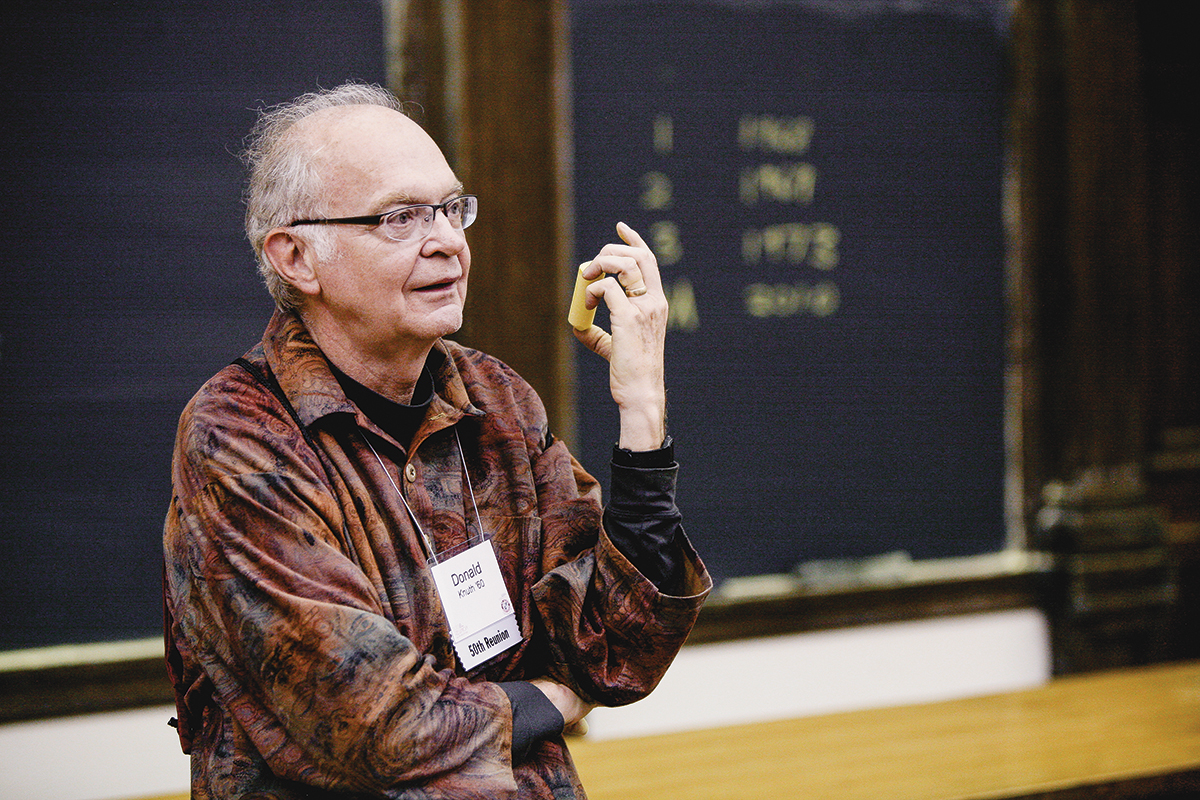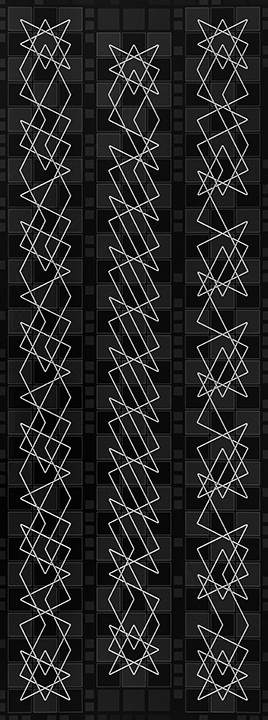connect
Ideal Combinations
Pioneering alumnus Donald Knuth's work inspired art for campus building
 Photo by DASHA SLOBOZHANINADonald Knuth
Photo by DASHA SLOBOZHANINADonald KnuthEven as an undergraduate at the Case Institute of Technology, Donald E. Knuth, PhD (CIT '60; GRS '60, mathematics; HON '80), was ahead of his time.
He rewrote code for the school's then-latest technology, the IBM 650 mainframe computer, instinctively knowing he could do it better. And as the men's basketball team manager, he developed a method for ranking players based on scoring, turnovers and other factors—a system that led to stories in Newsweek and on the CBS Evening News.
Knuth went on to an illustrious career, writing a multi-volume opus on computer programming. (He's working on the sixth volume, which he calls "4C.")
The books remain among the most influential scientific works of the past century.
And now Knuth's ingenuity is back on Case Western Reserve University's Case Quad.
 Image by Field StudioAlumnus Donald Knuth created several patterns turned into large graphic wall art for Olin Hall showing different "knight's tours," that is, different ways that a knight can tour chess boards of different sizes, encountering each square just once.
Image by Field StudioAlumnus Donald Knuth created several patterns turned into large graphic wall art for Olin Hall showing different "knight's tours," that is, different ways that a knight can tour chess boards of different sizes, encountering each square just once.
In an inspired combination, the computer-science giant's work is featured in the newly renovated Olin Hall, home to the Case School of Engineering's fast-growing Department of Computer and Data Sciences.
A dynamic entrance-level exhibition showcases Knuth's campus years and career, while his remarkable mind—in all its mathematical and artistic glory—is celebrated in large-scale graphic images of patterns along walls on three floors.
Knuth created the patterns to illustrate the many ways that a single knight can tour chessboards of different sizes, encountering each square just once.
Such "knight's tours," he said, are "one of humankind's earliest known combinatorial patterns, originating about 1,200 years ago in what was then Kashmir and Persia."
He even created preliminary sketches—measuring and cutting draft pieces at their true scale and taping them up at the correct height in his California home.
"How generous could a person be to not only give us permission for the art, but then to work out the whole design," said Kathy Barrie, director of the university's Putnam Collection of art. "It was really important to Don to show the lines in a way that they go over or under each other, like Celtic knots, so that individual lines remain separate."
Knuth was "blown away," he said, by the project design team's translation of his sketches into a great mix of matte and shiny textures, which he called "truly marvelous."
For the engineering school, the graphic displays send an inspiring message, said Lauren Biddlecombe, assistant dean of strategic initiatives.
"This new artwork, especially as it involves the work of a computer science legend like Don Knuth, is a stunning reminder for our students that science and engineering can have a powerful influence on art as well as technology," she said, "and that art, along with technology, has an important role in making our world a better place."
DONALD KNUTH'S VISION
To help produce the collaborative artwork for Olin Hall, alumnus Donald Knuth created six sets of patterns to achieve five goals. They are, in his words:
Visual appeal, to enhance the experience of being in the building
Technical appeal, to be consistent with world-class science in a world-class university
Variety, yet conforming to a unified theme
Educational appeal, so that a professor could, in principle, hold one or more class sessions next to the artwork, using it to teach important concepts of mathematics and computer science
Fun
"These patterns are subtle, and I'm hoping that people who pass by them every day will gradually discover more and more of their secrets."
— DONALD KNUTH





